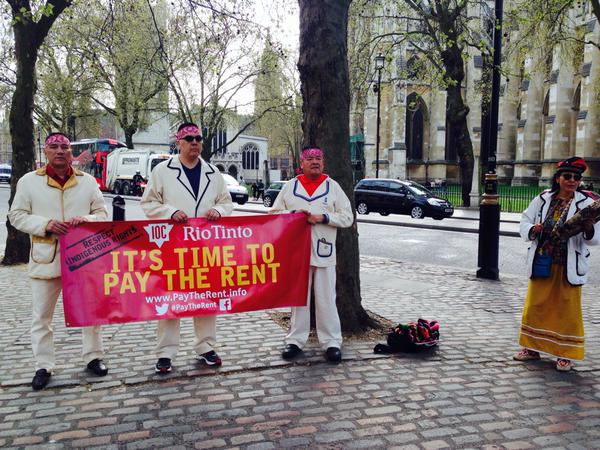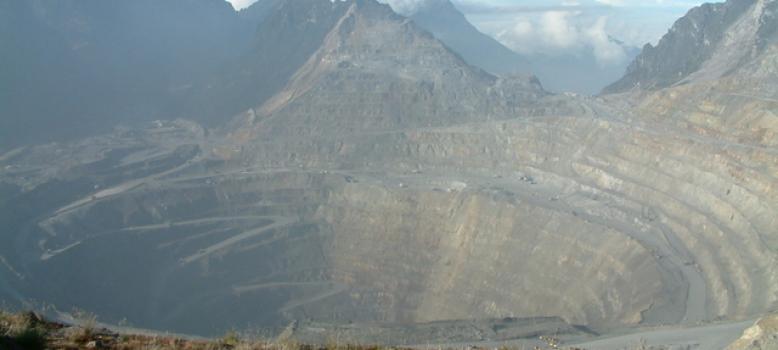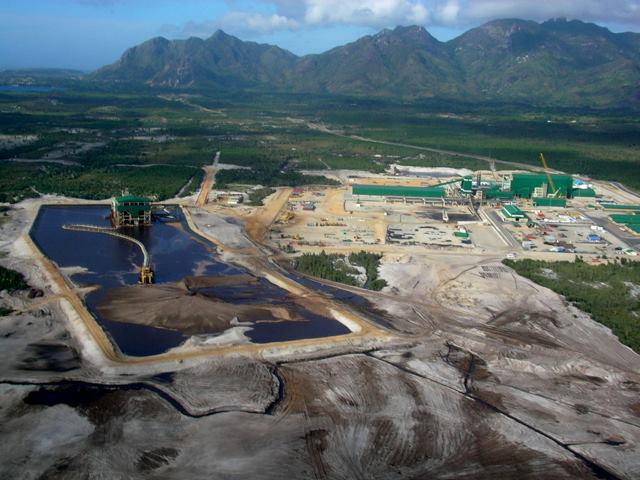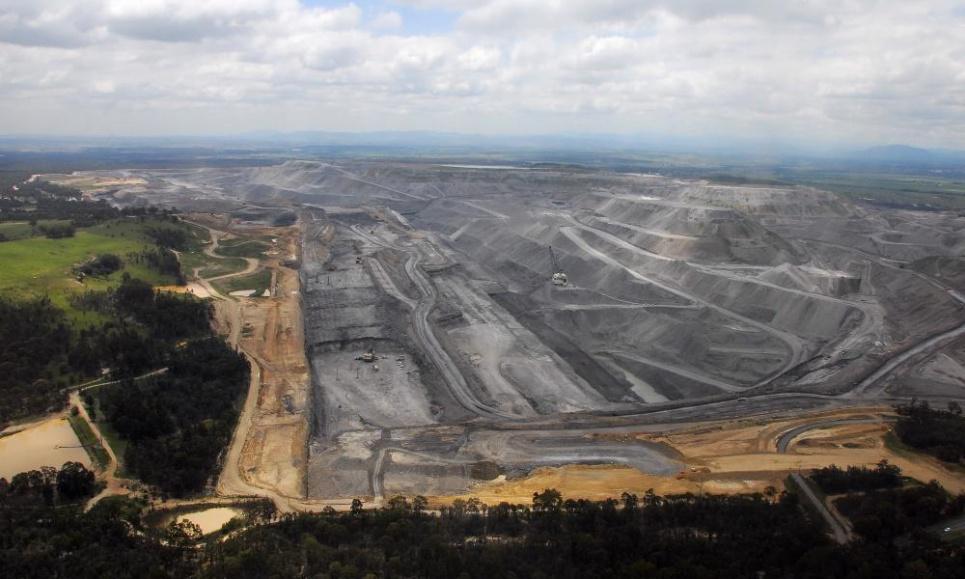
Where your money goes: a worldwide tour of Rio Tinto’s wreckage
- By Emilie Tricarico.

Rio Tinto employ over 60,000 people in more than 40 countries and is a major supplier in metals and minerals from around the world including aluminium, copper, diamonds, gold, industrial minerals, such as borates, titanium dioxide and salt along with iron ore, thermal and metallurgical coal and uranium. RioTinto includes four product groups: Aluminium Group, Rio Tinto Alcan, the Copper and Diamonds Group, the Energy and Minerals group, including Rio Tinto Uranium, the Iron Ore Group, second biggest contributor to the world’s seaborne iron ore trade.
Among the many fossil fuel companies that Scotland’s public pension funds have a stake in, Rio Tinto is one of the most significant with £3 million invested by the Lothian Pension Fund and an estimated £230,000 held by the Scottish Parliament pensions.*
While there were too many examples to include, below is a compilation of a few significant case studies in which the mining giant was prosecuted for environmental, social and war crimes.
Herders’ rights overrun in Mongolia
The South Gobi desert in Mongolia, which is particularly rich in copper and gold deposits, is home to Hukhaa Khudag coking coal mine and Oyu Tolgoi gold and copper mine in addition to several other fuel and metal resource projects.
At Oyu Tolgoi mine, exploited by Rio Tinto, concerns have been raised from local inhabitants, made up of Mongolian herders, around various health and ecological impacts directly related to the mining activities with a particular focus on the water supplies affected by such processes. While a group of local NGOs have brought the issues further to the European Bank for Reconstruction and Development Complaint Mechanism, a World Bank Report clearly outlined that the daily water needs of the nomadic populations were largely overtaken by the water usage of the industries in place. The report concluded that each mine’s water consumption was more than twice that of the all the livestock based in the region.
The Mongolian herders’ means of subsistence is now under significant threat due to reduced water resources. This alongside decreased pasture capacity, dust, and noise pollution effects, are having a strong impact on the general health and livelihoods of these communities.
A future project of further expanding the Oyu Tolgoi copper and gold mine poses an additional threat to area. Approval of the expansion of the current mine, expected to cost $5 billion, comes after disputes between Rio Tinto and the government over the funding of the Phase 2 of Oyu Tolgoi gold mine, which led to the suspension of the construction in 2013 and the loss of more than 2,000 jobs.
200 people a year killed in Utah
The Bingham Canyon mine in Salt Lake City is considered to be the world biggest and deepest open pit mining operation, having undeniably significant health air pollution impacts.
In 2011 Salt Lake City was classified as the ninth most toxic city in the USA by Forbes Magazine, to which Rio Tinto/Kennecott Bingham Canyon mine figured as the greatest contributor. The exposure of local communities to waste rock pile, fugitive dust and tailings emission along with toxic heavy metals and ground water pollution is of great concern given that half of the population is made up of young people and the elderly. As an estimate, Rio Tinto is considered to be contributing to the death of up to 200 people every year in Utah.
Since the publication of a “State of the Air” 2013 report from the American Lung Association, where Salt Lake City’s was awarded the worst grade, US health organisations have joined their efforts in suing Rio Tinto/Kennecott for their disastrous activities threatening local citizens’ health and their breaching standards and causing pollution.
Total habitat destruction at Grasberg, West Papua

The island of New Guinea, which is host to extraordinary biodiversity and rich cultural heritage, is also home to the largest goldmine and the third largest copper mine on the planet, known as the Grasberg goldmine.
The project has been developed under a common agreement between Rio Tinto, which owns 40% of the joint venture and Freeport-McMoran, an American corporation.
The mine has been criticised on many grounds for its operations, ranging from large-scale environmental destruction to crimes committed against human rights.
In addition, Grasberg mine’s controversial use of a specific mining technique, referred to as “riverline tailings disposal”, implies the dumping of toxic material in the rivers.
As a result of the political climate of corruption where Grasberg is located, the wealth generated by mining activities is most largely absorbed by the Indonesian military and officers leaving the Papuan provincial and local governments.
A 2006 independent report from Friends of the Earth Indonesia (WHALI) compiled a list of the severe environmental impacts derived from the project, among which ecological habitat destruction, acid rock drainage, heavy metals concentration and vegetation smothering figured. Moreover, the document mentioned a clear lack of transparency over the general management of the mine, in spite of the necessary provision of open public information made within the environmental risk assessment commissioned by Freeport-Rio Tinto. WHALI’s report concluded with several recommendations to the government around a focus on environmental law enforcement and the prosecution of the company over its operations presenting a breach of the law.
A year later, another document from the British organisation War On Want decried the human rights abuses perpetrated by the mining companies. This report exposed the complicity between Freeport-Rio Tinto and the Indonesian police and military under a climate of political instability, which led to the torture and disappearance of local residents in order to protect their activities from West Papuan secessionists.
In 2013 an accident at Grasberg mine caused the death of 28 people. Criticism of Freeport-Rio Tinto’s non-compliance with workers’ safety conditions was expressed by the Freeport Workers’ Union, whose prior complaints have not been taken into account.
War Crimes in Papua New Guinea
Bougainville, an autonomous region of Papua New Guinea, was still under Australian authority when in 1969 Cozinc Rio Tinto, a subsidiary of the mining giant, opened one of the world largest open-cut copper and gold mine known as Panunga.
Since, then the mine has led to countless struggles between the local population and the company starting with a pollution case in 1971, which was brought to the High court of Australia but ruled in favour of Rio Tinto on the grounds that Papua New Guinea wasn’t due similar environmental standards to those applied in Australia.
While local people and entire villages were displaced, the local Joba river suffered a particularly alarming level of pollution created by mine tailings and waste rock.
In addition, of the 2 billion dollars generated by the mine during the 1972-1989 period, more than half of it boosted the government’s own revenues.
After the formation of the Bougainville Republican Army (BRA), whose purpose was to defend the interests of the locals, tensions over the mine amounted to the planning of a bombing act at Panunga in 1989. Shortly after the closure of the mine began a decade war for independence from the Papua New Guinea Government causing an estimated 15,000 deaths.
In 2000 an American lawyer filed a lawsuit against Rio Tinto for bearing significant responsibility in the war crimes and murders committed by the Papua New Guinea army. After years of trials and appeals, it was eventually dismissed in 2013 by the Court of Appeals on the basis of the extraterritorial application of the “Alien Tort Claims Act”.
Community resistance to ilmenite mining, Madagascar

The region of Anosy in South East Madagascar with its 75 million tonnes of ilmenite deposits, a source of titanium found in mineral sands, became the prime location for the development of QIT Mineral Madagascar (QMM) mine, a partnership project between Rio Tinto and the Madagascar government, in which Rio Tinto owns to 80% of the assets.
The mining activities have been particularly damaging to local populations in terms of their disastrous impacts to the fishing and agricultural areas.
The most critical aspect of the project, which started in 2005, was probably the economic and social injustice perpetrated on the local residents, who were either displaced or restricted from their forestry and land resources, or faced sharply rising food prices, rent and medical costs. As a result, protests were organised by the local population asking for just compensation strategies to those dispossessed from their land and employment opportunities for the inhabitants of the area. The situation took a dramatic turn when a group of armed residents blockaded workers at the mine along with its CEO, Nyfanja Rakotomalala. Following this event, 15 members from “Fagnomba” association campaigning for the rights of the local people in the city of Taolagnaro were arrested and imprisoned in order to silence their claims.
Environment Defenders fight Coal & Allied, Australia

In 2012, with the help of the Environment Defender’s Office of New South Wales, the inhabitants of Australian town Bulga in the Hunter Valley won a court case against the decision of the New South Wales Government to choose their village for the construction of a new coal mine.
With the opening of the Mount Thorley-Warkworth mine, Coal & Allied, a Rio Tinto subsidiary, had promised the creation of 150 jobs to the 300 residents of Bulga but the inhabitants expressed strong fears about the project. Shortly after the decision from the Supreme Court, the Minister of Resources made an amendment to the current planning policy to which economic issues were given a priority within the process. Following this alteration, the mining company renewed its application to the development of the mine. The New South Wales Planning Assessment Commission recommended approval for Warkworth to go ahead, while issuing a report listing the impacts related to the expansion of Rio Tinto’s mining project, including the relocation of the entire town as a result of the use of 698 hectares including 459 hectares of endangered ecological habitat.
After a visit to Bulga, the New South Wales Planning Minister promised an amendment to the current State Environment Planning Policy, which would ensure that the economic considerations do not overweigh the social and environmental impacts. For the villagers of Bulga, this strongly awaited move is thought to be their last resort before the final ruling in July from the Planning Assessment Commission.
___
*Data correct as of 2015. Compiled by Friends of the Earth Scotland, available on request.
